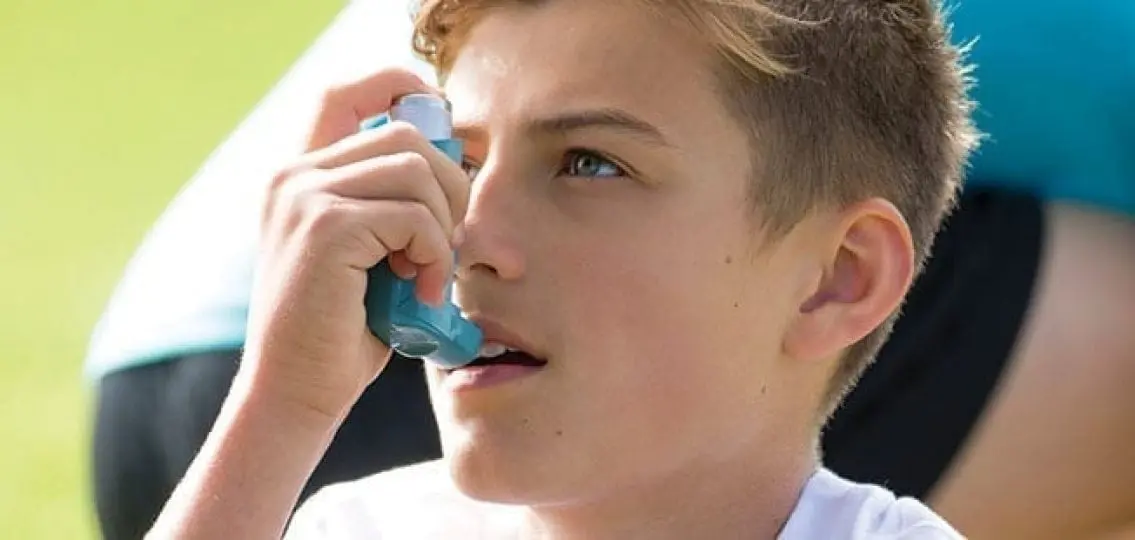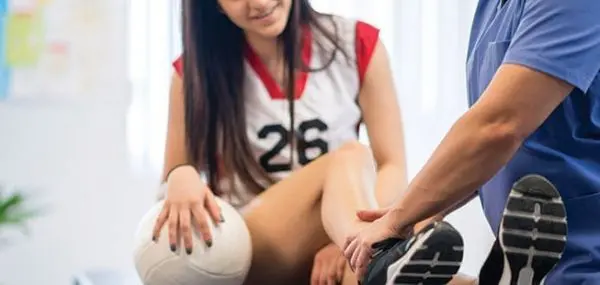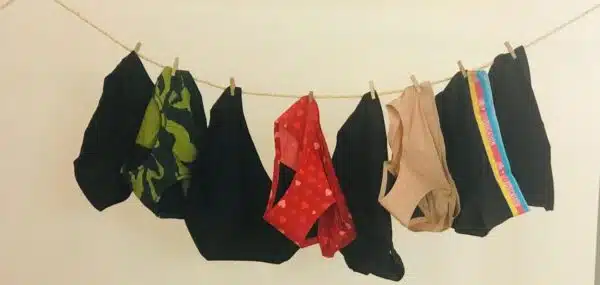Your 16-year-old soccer player experiences trouble breathing during games. They are diagnosed with asthma and use an inhaler, but it doesn’t seem to help. Is it exercise-induced asthma—or could it be an entirely different issue called vocal cord dysfunction?

Your Teen spoke with Craig H. Zalvan, MD, FACS, a partner at ENT and Allergy Associates and clinical professor of otolaryngology (ear, nose and throat) at New York Medical College.
Breathing Problems During Exercise May Not Be Asthma
Q: What is asthma?
Zalvan: Asthma is a chronic or long-term inflammation in the airways of the lungs. As the airways tighten and narrow, air gets trapped in the lungs. The lungs feel overinflated, and the patient feels short of breath or like they cannot catch their breath. It is characterized by a wheezing or rough sound on exhalation. Usually, asthma is diagnosed with pulmonary function testing, and an inhaler is prescribed. In some athletes, however, using an inhaler does not resolve the symptoms. And in many cases, it actually makes them worse. Many athletes quit because they cannot exercise without experiencing breathing difficulty. Sports and asthma do not go well together.
Many teens active in sports begin wheezing after 10 to 20 minutes of strenuous exercise. A pediatrician or pulmonologist might diagnose them with bronchospasms or exercise-induced asthma. But this is commonly a wrong diagnosis. This shortness of breath is sometimes caused by a vocal cord dysfunction called Paradoxical Vocal Fold Motion Disorder or, more recently, Exercise-Induced Laryngeal Obstruction.
Q: What is vocal cord dysfunction?
Zalvan: It’s a disorder most commonly characterized by disordered breathing on inhalation. Kids who have this disorder are usually 12 to 17 years old, female, and play really rigorous sports such as soccer, cross country, swimming, or lacrosse. Within 10 to 20 minutes of beginning exercise, they experience acute difficulty breathing which lasts for 1 to 2 minutes. While it’s happening, they may find themselves momentarily unable to speak or breathe, which can be scary. These teens will report an inspiratory stridor when they breathe in—a high-pitched, whistling noise on inhaling. They will point to their throats as the source of pain or discomfort, not to their lungs or chest.
We also know that anxiety plays a role. These tend to be elite athletes as well as high-performing students who are under a lot of pressure. Symptoms tend to occur right before a competition or big game, when athletes are experiencing heightened levels of anxiety or stress.
Q: How is vocal cord dysfunction different from asthma?
Zalvan: To differentiate vocal cord dysfunction from asthma, it’s important to evaluate a patient’s history. Some kids with difficulty breathing when they engage in sports will go weeks, months, even years using an inhaler. They will report that they have noisy breathing during sports. They might also tell you that their asthma got worse instead of better after using an inhaler. These kids can usually pinpoint that they begin to have problems breathing 10 to 15 minutes into their activity.
The most important factor is the timing of when the problem occurs. The breathing difficulty is when breathing in, as opposed to the wheezing on exhalation which is characteristic of asthma.
Q: What causes the vocal cord dysfunction?
Zalvan: If you have kids with a very detailed health history, they may be able to remember that before this breathing difficulty began, they had a cold, a virus, or the flu a week or two before their symptoms began. This is what we call a viral insult: They now have problems resulting from that exposure such as a chronic cough, throat clearing, or the feeling of a lump in the throat.
Q: What explains the gender differentiation?
Zalvan: We don’t know why it’s more common in girls than boys. It could be a hormonal difference that may affect the sensitivity to stimuli. Anxiety may be more recognized and commonly diagnosed in girls. It’s also very possible that boys do not self-report their symptoms as frequently as girls.
Q: What treatment do you recommend for vocal cord dysfunction?
Zalvan: We use a treatment called trigger reduction to decrease the triggers that bring on the vocal cord dysfunction. This may include:
- Salt spray, sinus irrigation, antihistamines, and steroid sprays to reduce nasal/sinus drainage.
- Following a Mediterranean diet-based regimen to reduce reflux. Reflux can trigger a spasm when stomach acid hits the already hypersensitive area in the throat. It can result in coughing, throat clearing, a feeling of a lump in your throat, and discomfort swallowing. Research indicates that following a plant-based diet (less than 10% meat and dairy) is very effective in reducing the stomach acid and digestive enzymes which can irritate the throat and make it more sensitive.
- Respiratory therapy called EILOT (Exercise-induced laryngeal obstruction therapy) to learn breathing techniques to control symptoms after exposure to triggers or while exercising.
- Psychotherapy to address anxiety and help patients learn to deal with stressors.
Q: What success rate do you see with this approach?
Zalvan: The timeframe is different for each individual, but within six months 80% of patients will see their symptoms disappear. For a minority of kids, it may last for years, but it rarely continues past the age of 25. Most will outgrow it.

Q: What does this mean for teen athletes who have been diagnosed with asthma?
Zalvan: Studies have shown that one-third of adults with a diagnosis of asthma do not have it. Likely, a significant percentage of kids diagnosed with asthma don’t have it either. If we can correctly treat the vocal cord dysfunction, then these athletes can continue playing and competing. That’s not to say a teen couldn’t have concurrent asthma. But the key factor to distinguish asthma from vocal cord dysfunction is difficulty with inhalation, not exhalation.




